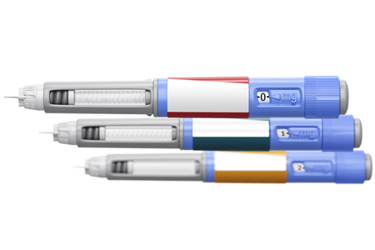Outsourcing GLP-1 Programs: Is There Capacity For Biotechs?

By Louis Garguilo, Chief Editor, Outsourced Pharma

Kailera Therapeutics is in the process of developing and manufacturing multiple clinical-stage GLP-1-based assets, including a small-molecule entry.
On the one hand, it’s convenient to Kailera’s outsourcing efforts when CDMOs are interested in discussing development and manufacturing with the biotech on, let’s just say, an area that appears to have astronomical potential commercial opportunities.

The challenge, then, for Kailera’s Chief Technology Officer, Doug Bakan, who came out of retirement to head up the Tech Ops team, is:
- Garnering CDMO attention over that of competitors
- Ensuring CDMOs have the professed skillset/capabilities
- Contracting for timely capacity
- Understanding opportunities for future needs and growth
What he has to say about all that may surprise you.
CDMOs Recognize Best-In-Class
Bakan starts with a bird’s eye view. He notes the obvious first factor that GLP-1 programs have exploded with interest the last few years.
We have the powerful Big Pharma leaders, – Lilly, Novo Nordisk, and soon others we can assume – taking up capacity in terms of their own internal manufacturing, their outsourcing to CDMOs, and in the case of Novo, acquiring CDMO assets.
That inertia has, as Bakan says, “more CDMOs thinking the GLP-1 space is desirable.”
“You're seeing these companies either growing their existing GLP-1 manufacturing capabilities or communicating plans to introduce them.”
“Our job has been to find out those companies who in fact have capacity now, but who also have that real vision to continue to expand going forward, because the commercial demand is going to be insane.”
That, however, doesn’t drive Bakan and company crazy.
“We are in a unique position though,” he says.
“When our Phase 2b data for KAI-9531 came out from our Chinese partner, we were deemed in many circles to potentially be best-in-class for GLP-1s." (Kailera in-licensed its programs from Jiangsu Hengrui Pharmaceuticals Co., Ltd.; see part one).
I challenge him on that statement of relative superiority. His response:
“Comparing results across separate studies should always be done cautiously. However, when you review the results between tirzepatide, semaglutide, and our KAI-9531 (an injectable GLP-1/GIP-receptor dual agonist that has demonstrated positive results from concluded Phase 2 trials in obesity and diabetes in China), our data sets look very impressive.”
“A lot of the investment community has basically responded ‘Wow, they have a super-competitive product portfolio.’” (For more on those investors, see part one.)
And that, says Bakan, changes things.
“It changes the game a lot for us, because if we had had a me-too entry or more mediocre data, we would probably be struggling to get the attention of CDMOs.”
“Yes, I would be pleading to let me squeeze in between Lilly and Novo, and maybe others. But our situation is completely turned around.”
So much so that Bakan says CDMOs are calling him, often.
The real challenge has been to figure out how to “weed through all the people claiming they can manufacture GLP-1s for us, and those who actually can accomplish this at the scale, price, quality, and capacity we need”.
“It's a very different twist actually having CDMOs coming to you suggesting they would be a great partner.”
“Finding and selecting the best among them is kind of a luxury.”
We Will Make It Work
Exercising that “luxury,” though, requires some efforts.
Bakan would rather that his external partners be situated in the U.S.. The goal is to avoid the macro and economic political environments that burdens today’s pharmaceutical supply chain conversations.
“We certainly are not oblivious to the BIOSECURE Act, tariffs, and so on. These are exactly some of the reasons why we decided to add manufacturing capabilities outside of China at this point,” he explains.
“However,” Bakan continues, “I want to be clear. We absolutely do not have to do this work in the U.S. alone."
“We're still very open to working with European companies as well. We haven't heard as much of the negativity associated with tariffs and trade legislation with European countries vis-à-vis Chinese companies."
Bakan is keeping an eye on that. His legal team is providing updates on the geopolitical environment, and how that might impact Kailera's selection of CDMO partners.
One (big) question is whether there are enough CDMOs in the U.S. with the skillsets and capacity, and wherewithal as Bakan says above, for further expansion into the future.
He feels there's a real mix dotting the U.S. playing field. There are companies with infrastructure in place today to support development through Phase 3 programs in the GLP-1 space.
Other CDMOs say, 'We can get you started and let's grow together’.
That pitch can include discussions around shared investments, either in additional lines within existing facilities, or all-new construction and equipment.
“A final point I want to stress,” Bakan says. “I do not want to be single sourced for either drug substance or product.”
“We're looking at establishing a network of suppliers able to support our development programs and future commercial needs.
“Some of this will be through supplier diversification, some through pure growth. We've got to ensure that both of those factors are figuring into ensuring a robust supply chain.”
As we mentioned in part one, Bakan and team are not deterred by any challenges.
“My mindset is we are going to make all this work,” he says with a smile.
“If that means I have to make physical investments in the right CDMO here in the U.S. to help them grow with us, we're willing to consider cost sharing that growth.”
But that takes time, and so in the interim, his efforts are focused on “picking CDMOs with current infrastructure in place to get us through Phase 3.
“I can guarantee you that while our Phase 3 program is ongoing,” he concludes, “we’ll be finalizing strategies to have manufacturing at the scale we’ll need when we get to commercial.”
